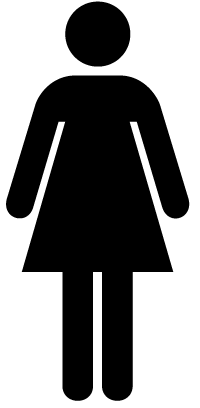the gender pain gap: why we need a better focus on women’s health

If you ask your doctor or physician about common heart attack symptoms, many would tell you to look for chest pain. But over the course of the past few decades, research has proven that heart attack symptoms may not be as clear cut as previously assumed.
In fact, symptoms can vary greatly depending on your age, your heart conditions, and perhaps most importantly, your gender.
It’s one of today’s most pervasive inequalities, and one that certainly doesn’t attract enough attention. Scholars and researchers have begun labelling this phenomenon the “gender pain gap,” where, in essence, many ailments that women suffer from are misdiagnosed or mistreated simply because women’s medicinal issues continue to be perceived from a perspective that uses male symptoms as a reference point.
‘It’s a disturbing thought, but one which mounting evidence is making harder to ignore’, Siobhan Fenton writes. ‘Women’s pain is taken much less seriously by doctors than men’s is.’
But why is women’s health sidelined so often?
Lack of Appropriate Research
In 1993, the U.S. mandated that women and minorities be included in clinical trials funded by the federal government. In the 20 years since, it’s become clear just how vital those mandates were. Not only do men and women experience certain diseases differently, but their responses to various treatments can fluctuate considerably.
A large percentage of research has been dedicated to women’s pregnancy and childbearing. But before the 1993 mandate, little research has been dedicated to other ailments or maladies, which manifest differently in male bodies versus female bodies.
Different Symptoms; Same Core Problem
Once the 1993 mandates took effect, researchers began to quickly realise that men and women may experience different symptoms while suffering from the same medical issues.
Symptoms and treatment for diseases such as Alzheimer’s, addiction, lung cancer, pain, depression, and heart disease present vastly differently depending on your sex.
For example, while symptoms of a heart attack for men may include chest pain, upper body pain or discomfort, irregular heartbeat, or shortness of breath, the medical website Healthline notes that women’s symptoms may be far different. Women’s symptoms may include disturbances in sleep patterns, anxiety, lightheadedness, indigestion or gas-like pain, and fatigue that lasts for a period of several days.
The lack of research certainly creates a swath of problems for women. Not only are they more often misdiagnosed, but their pain is treated with less intensity than their male counterparts.
In fact, when men and women enter accident and emergency services in hospitals, women generally wait nearly 20 minutes longer than men (on average) when presenting with the same symptoms. Women are also prescribed far less pain-relieving medication, even though period pain can be as painful as a heart attack.
Gender Stereotypes
As Tara Culp-Ressler of Think Progress reports, some women have a difficult time convincing health professionals to take their symptoms seriously.
‘When Kathy tried to seek medical attention for abnormally heavy periods that were leaving her feeling so faint that she was unable to stand, four different medical professionals said it was all in her head. They concluded she was simply struggling with anxiety and perhaps even had a serious mental health disorder. She says her primary care doctor repeatedly told her, “All your symptoms are your imagination”.’
Ressler writes that it took Kathy over nine months to be diagnosed with a condition that required surgical intervention, and it took a lot of self-advocacy to get her to that point. As it turns out, she had been suffering from anemia, not anxiety.
Unfortunately, Kathy’s story is an all too common phenomenon for women who are suffering from medical ailments. For many women, symptoms are seen as hysterical rather than real.
There are a number of reasons that this gender disparity exists. Perhaps the most compelling reason comes from researchers J. Crook and E. Tunks in their study ‘Women With Pain,’ which proposes that women with chronic pain conditions are more likely to be misdiagnosed with mental health disorders than men, resulting in “hysterical” diagnoses that are often treated with sedatives rather than pain medication.
‘It is thought that this wrong conflation with mental health may be due to sexist stereotypes that women are “irrational” or “emotional”, which means doctors find it easier to believe women’s expressions of pain have no physical basis,’ notes The Independent.
‘Conversely, men are seen as more rational and when they say they are feeling acute pain, doctors take their symptoms seriously as having physical cause rather than assuming an emotional basis.’
It’s clear that there need to be changes made globally in order for women’s health to be taken seriously. Whether this comes in the form of nurses who specialise in women’s health, gender-specific research of disease, or simply advising physicians to watch their biases, women’s health still has many obstacles to overcome.

